Modelling Faba Bean (Vicia faba L.) Biomass Production for Sustainability of Agricultural Systems of Pampas
Abstract
1. Introduction
2. Materials and Methods
2.1. Previous Models
2.2. Mathematical Modelling
| Algorithm 1. Algorithm for the octahedric regression model. |
| 1: for i in Integers{1 .. P} |
| 2. Real estimation[i] = 0 |
| 3. for k in Integers{1 .. n} |
| 4. Real estim_plus = 0, estim_minus = 0 |
| 5. Real dist_plus = 0, dist_minus = 0 |
| 6. for j in Integers{1 .. P} |
| 7. dist_plus = dist_plus + |
| 8. dist_minus = dist_minplus + |
| 9. estim_plus = estim_plus + y[j] × |
| 10. estim_minus = estim_min + y[j] × |
| 11. estim_plus = estim_plus/dist_plus |
| 12. estim_minus = estim_minus/dist_minus |
| 13. estimation[i] = estimation[i] + (estim_plus + estim_minus)/(2 × n); |
3. Results
3.1. Experimental Data
3.2. Linear Models
3.3. Numerical Models
3.4. Non-Linear Model
3.5. Stability of the Models
3.6. Model Validation
4. Discussion
5. Conclusions
Author Contributions
Funding
Conflicts of Interest
References
- Food and Agriculture Organization of the United Nations (FAO). Available online: http://www.fao.org (accessed on 1 April 2020).
- Rubiales, D.; Mikić, A. Introduction: Legumes in Sustainable Agriculture. Crit. Rev. Plant Sci. 2015, 34, 2–3. [Google Scholar] [CrossRef]
- Confalone, A.; Navarro, M.; Vilatte, C.; Barufaldi, M.; Aguas, L.; Ponce, G. Crecimiento, captura de luz y componentes del rendimiento del haba cv. Alameda creciendo en Azul, provincia de Buenos Aires. Rev. Fca Uncuyo 2013, 45, 105–116, ISSN 0370-4661. [Google Scholar]
- Redden, R.; Zong, X.; Norton, R.M.; Stoddard, F.L.; Maalouf, F.; Ahmed, S.; Ling, L. Efficient and sustainable production of faba bean. In Achieving Sustainable Cultivation of Grain Legumes: Vol. 2: Improving Cultivation of Particular Grain Legumes; Burleigh and Dodds Science Publishing: Cambridge, UK, 2018; pp. 269–296. [Google Scholar]
- Sau, F.; Mínguez, M.I. Adaptation of indeterminate faba beans to weather and management under a Mediterranean climate. Field Crop Res. 2000, 66, 81–99. [Google Scholar] [CrossRef]
- Aschi, A.; Aubert, M.; Riah-Anglet, W.; Nélieu, S.; Dubois, C.; Akpa-Vinceslas, M.; Trinsoutrot-Gattin, I. Introduction of Faba bean in crop rotation: Impacts on soil chemical and biological characteristics. Appl. Soil Ecol. 2017, 120, 219–228. [Google Scholar] [CrossRef]
- Confalone, A.; Lizaso, J.; Ruíz-Nogueira, B.; López-Cedrón, F.; Sau, F. Growth, PAR use efficiency, and yield components of field grown Vicia faba L. under various temperature and photoperiod regimes. Field Crop Res. Elsevier 2010, 115, 140–148. [Google Scholar] [CrossRef]
- Summerfield, R.J.; Roberts, E.H.; Ellis, R.H.; Lawn, R.J. Towards the reliable prediction of time to flowering in six annual crops. I. The development of simple models for fluctuating field environments. Exp. Agric. Camb. 1991, 27, 11–31. [Google Scholar] [CrossRef]
- Marcelis, L.F.; Heuvelink, E.; Goudriaan, J. Modelling biomass production and yield of horticultural crops: A review. Sci. Hortic. 1998, 74, 83–111. [Google Scholar] [CrossRef]
- Ajam, N.H.; Soltani, A.; Majidi, H.E.; Homaei, M. Modelling Response of Emergence to Temperature in Faba Bean under Field Condition. 2007. Available online: https://www.sid.ir/en/Journal/ViewPaper.aspx?ID=103632 (accessed on 1 April 2020).
- Daur, I.; Sepetoğlu, H.; Sindel, B. Dynamics of faba bean growth and nutrient uptake and their correlation with grain yield. J. Plant Nutr. 2011, 34, 1360–1371. [Google Scholar] [CrossRef]
- Manschadi, A.M.; Sauerborn, J.; Stutzel, H.; Gobel, W.; Saxena, M.C. Simulation of faba bean (Vicia faba L.) growth and development under Mediterranean conditions: Model adaptation and evaluation. Eur. J. Agron. 1998, 9, 273–293. [Google Scholar] [CrossRef]
- Boote, K.; Mínguez, I.; Sau, F. Adapting the CROPGRO legume model to simulate growth of faba vean. Agron. J. 2002, 94, 743–756. [Google Scholar] [CrossRef]
- Hoogenboom, G.; Porter, C.H.; Shelia, V.; Boote, K.J.; Singh, U.; White, J.W.; Hunt, L.A.; Ogoshi, R.; Lizaso, J.I.; Koo, J.; et al. Decision Support System for Agrotechnology Transfer (DSSAT); Version 4.7.5; DSSAT Foundation: Gainesville, FL, USA, 2019. [Google Scholar]
- Ruiz-Ramos, M.; Mínguez, I. ALAMEDA, a structural–Functional model for Faba Bean Crops: Morphological parameterization and verification. Ann. Bot. 2006, 97, 377–388. [Google Scholar] [CrossRef]
- Monteith, J.L. Principles of resource capture by crop stands. In Resource Capture by Crops; Monteith, J.L., Scott, R.K., Unsworth, M.H., Eds.; Nottingham University Press: Nottingham, UK, 1994; pp. 1–15. [Google Scholar]
- Monsi, M.; Saeki, T. The light factor in plant communities and its significance for dry matter production. Jpn. J. Bot. 1953, 14, 22–52. [Google Scholar]
- Sinclair, R.T.; Muchow, R.C. Radiation Use Efficiency. Advances in Agronomic 65; Academic Press: Cambridge, MA, USA, 1999. [Google Scholar]
- Confalone, A.; Boote, J.; Lizaso Sau, F. Temperature and Photoperiod Effects on Vicia faba Phenology Simulated by CROPGRO-Fababean. Agron. J. Elsevier 2011, 103, 1036–1050, ISSN 0002-1962. [Google Scholar] [CrossRef]
- Johnson, R.A.; Wichern, D.W. Applied multivariate statistical analysis. Statistics 2015, 6215, 10. [Google Scholar]
- Archontoulis, S.V.; Miguez, F.E. Nonlinear regression models and applications in agricultural research. Agron. J. 2015, 107, 786–798. [Google Scholar] [CrossRef]
- Markovsky, I.; Van Huffel, S. Overview of total least-squares methods. Signal Process. 2007, 87, 2283–2302. [Google Scholar] [CrossRef]
- Lourakis, M.I. A brief description of the Levenberg-Marquardt algorithm implemented by levmar. Found. Res. Technol. 2005, 4, 1–6. [Google Scholar]
- Cornejo Zúñiga, O.; Rebolledo Vega, R. Estimación de parámetros en modelos no lineales: Algoritmos y aplicaciones. Rev. EIA 2016, 25, 81–98. [Google Scholar] [CrossRef]
- Ranganathan, A. The levenberg-marquardt algorithm. Tutoral Lm Algorithm 2004, 11, 101–110. [Google Scholar]
- Transtrum, M.K.; Sethna, J.P. Improvements to the Levenberg-Marquardt algorithm for nonlinear least-squares minimization. arXiv 2012, arXiv:1201.5885. [Google Scholar]
- Aragonés, L.; Pagán, J.I.; López, I.; Navarro-González, F.J.; Villacampa, Y. Galerkin’s formulation of the finite elements method to obtain the depth of closure. Sci. Total Environ. 2019, 660, 1256–1263. [Google Scholar] [CrossRef] [PubMed]
- Palazón, A.; López, I.; Aragonés, L.; Villacampa, Y.; Navarro-González, F.J. Modelling of Escherichia coli concentrations in bathing water at microtidal coasts. Sci. Total Environ. 2017, 593, 173–181. [Google Scholar] [CrossRef] [PubMed]
- Aragonés, L.; López, I.; Villacampa, Y.; Navarro-González, F.J. Using the presence of seagrass Posidonia oceanica to model the equilibrium profile parameter A of sandy beaches in Spain. J. Coast. Res. 2017, 33, 1074–1085. [Google Scholar] [CrossRef]
- Aragonés, L.; Villacampa, Y.; Navarro-González, F.J.; López, I. Numerical modelling of the equilibrium profile in Valencia (Spain). Ocean Eng. 2016, 123, 164–173. [Google Scholar] [CrossRef]
- Navarro-González, F.J.; Villacampa, Y. A finite element numerical algorithm for modelling and data fitting in complex systems. Int. J. Comput. Methods Exp. Meas. 2016, 4, 100–113. [Google Scholar] [CrossRef]
- Navarro-Gonzalez, F.J.; Villacampa, Y. An Octahedric Regression Model of EnergyEfficiency on Residential Buildings. Appl. Sci. 2019, 9, 4978. [Google Scholar] [CrossRef]
- SSS-USDA 2014 Soil Survey Staff. Keys to Soil Taxonomy, 12th ed.; USDA-Natural Resources Conservation Service: Washington, DC, USA, 2014. [Google Scholar]
- Allen, R.G.; Pereira, L.S.; Raes, D.; Smith, M. Crop Evapotranspiration-Guidelines for Computing Crop Water Requirements—FAO Irrigation and Drainage Paper 56; FAO: Rome, Italy, 1998; Volume 300, p. D05109. [Google Scholar]
- List, R.J. Smithsonian Meteorological Tables; Smithsonian Institution: Washington, DC, USA, 1971. [Google Scholar]
- Szeicz, G. Solar radiation for plant growth. J. Appl. Ecol. 1974, 2, 617–636. [Google Scholar] [CrossRef]
- Fahrmeir, L.; Kneib, T.; Lang, S.; Marx, B. Regression models. In Regression; Springer: Berlin/Heidelberg, Germany, 2013; pp. 21–72. [Google Scholar]
- Tranmer, M.; Elliot, M. Multiple linear regression. Cathie Marsh Cent. Census Surv. Res. CCSR 2008, 5, 30–35. [Google Scholar]
- Spss12.0. Guide to Statistics; Mathsoft, Inc.: Cambridge, MA, USA, 2003. [Google Scholar]
- Mixon, J. GRETL: An econometrics package for teaching and research. Manag. Financ. 2010, 36, 71–81. [Google Scholar] [CrossRef]
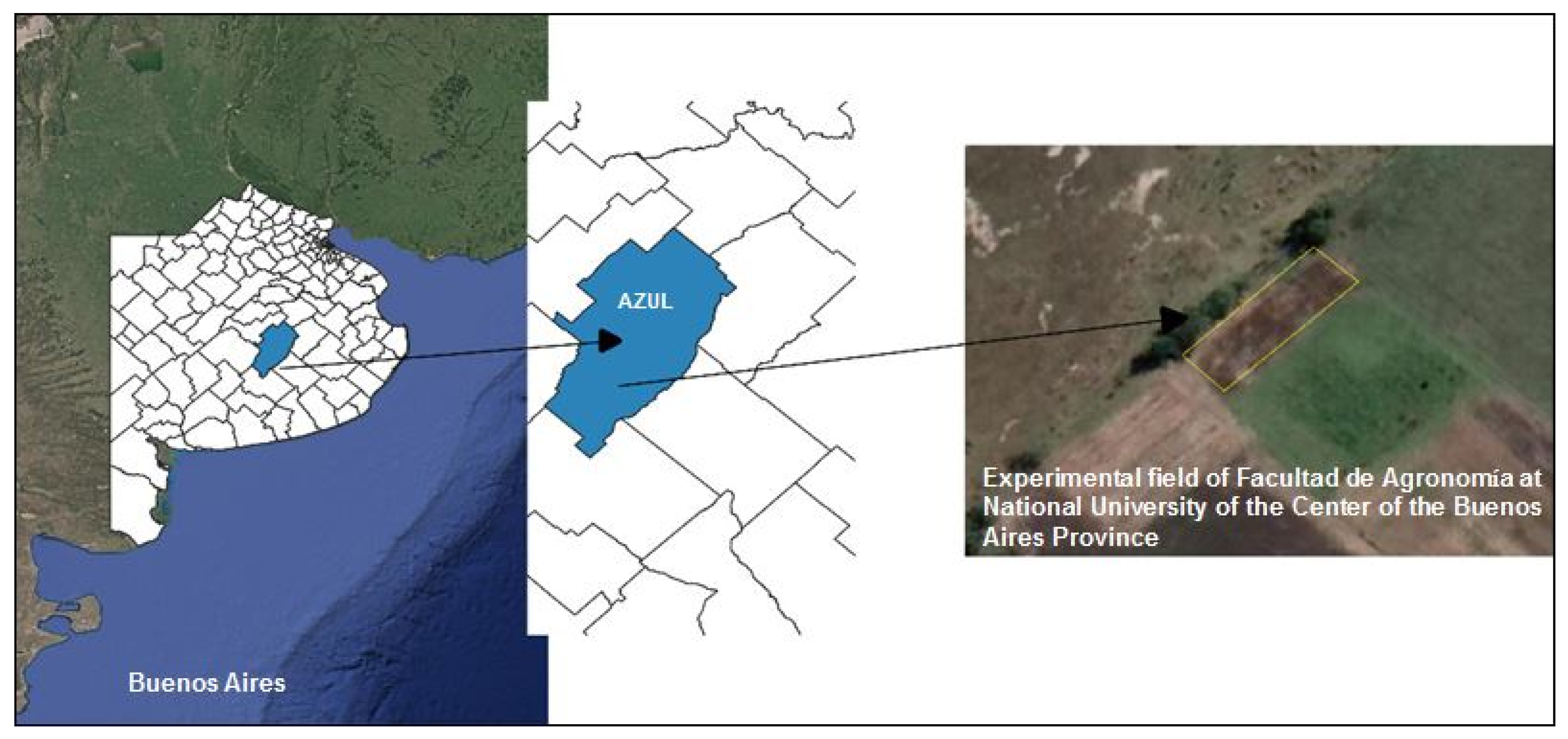
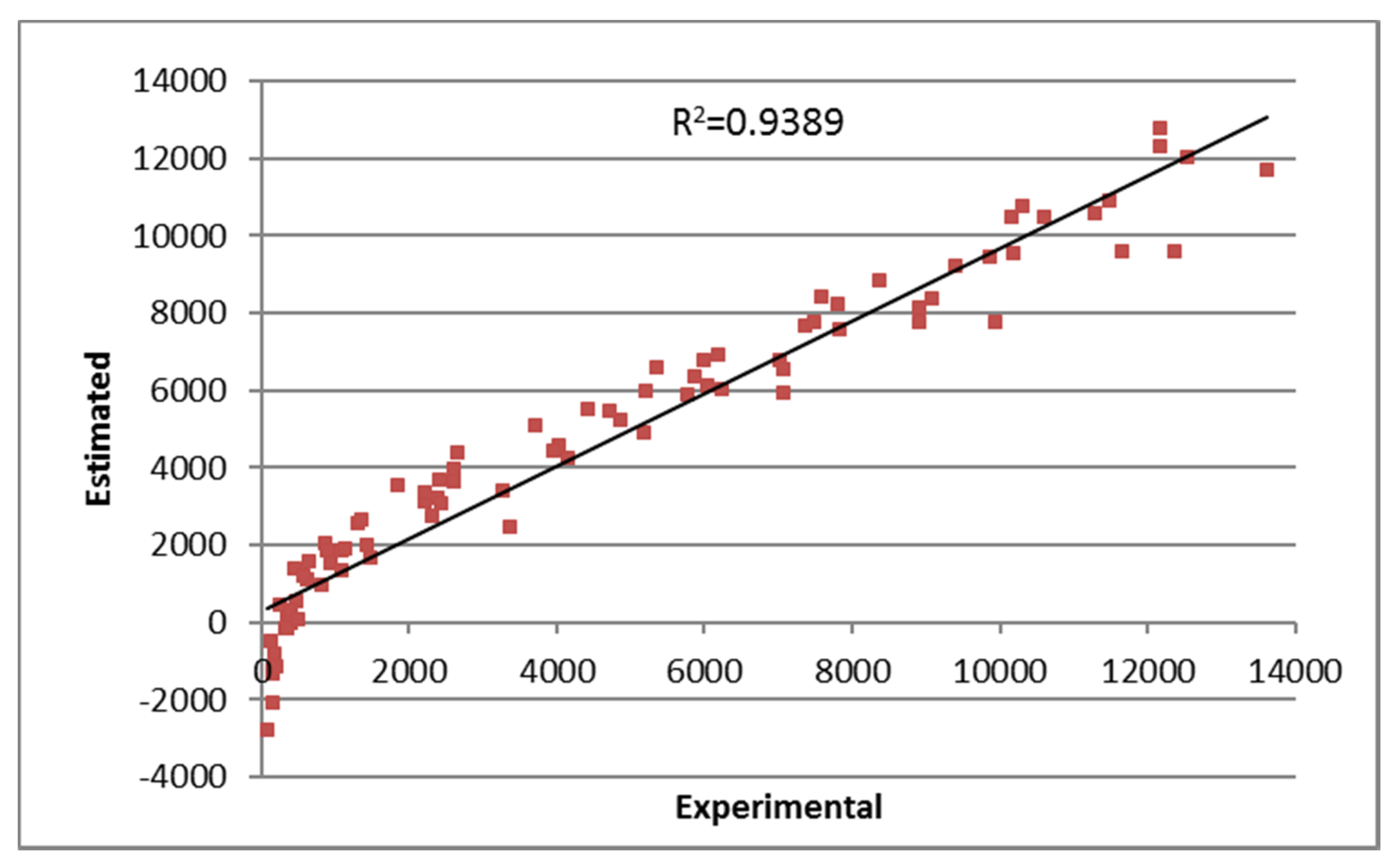
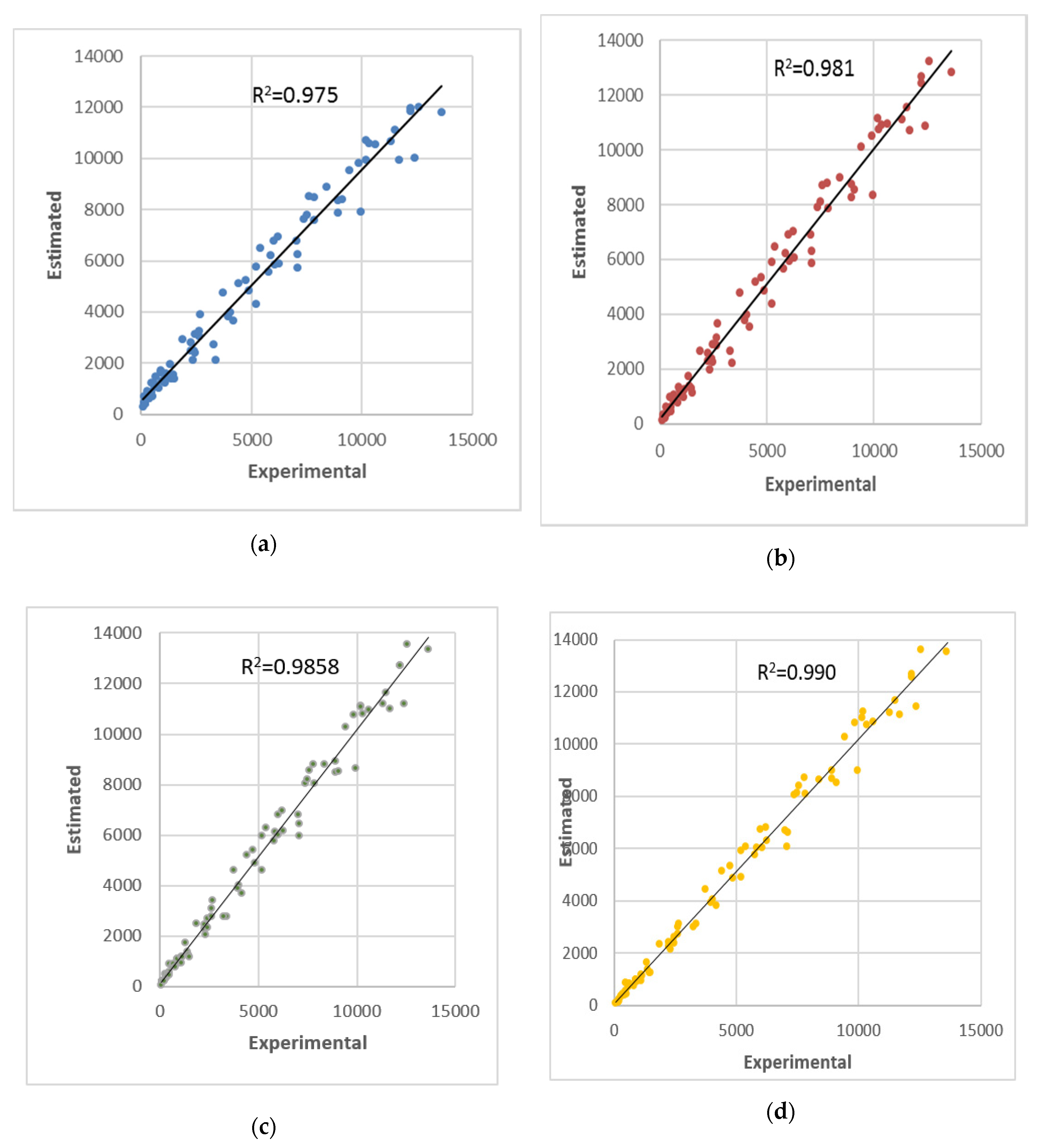
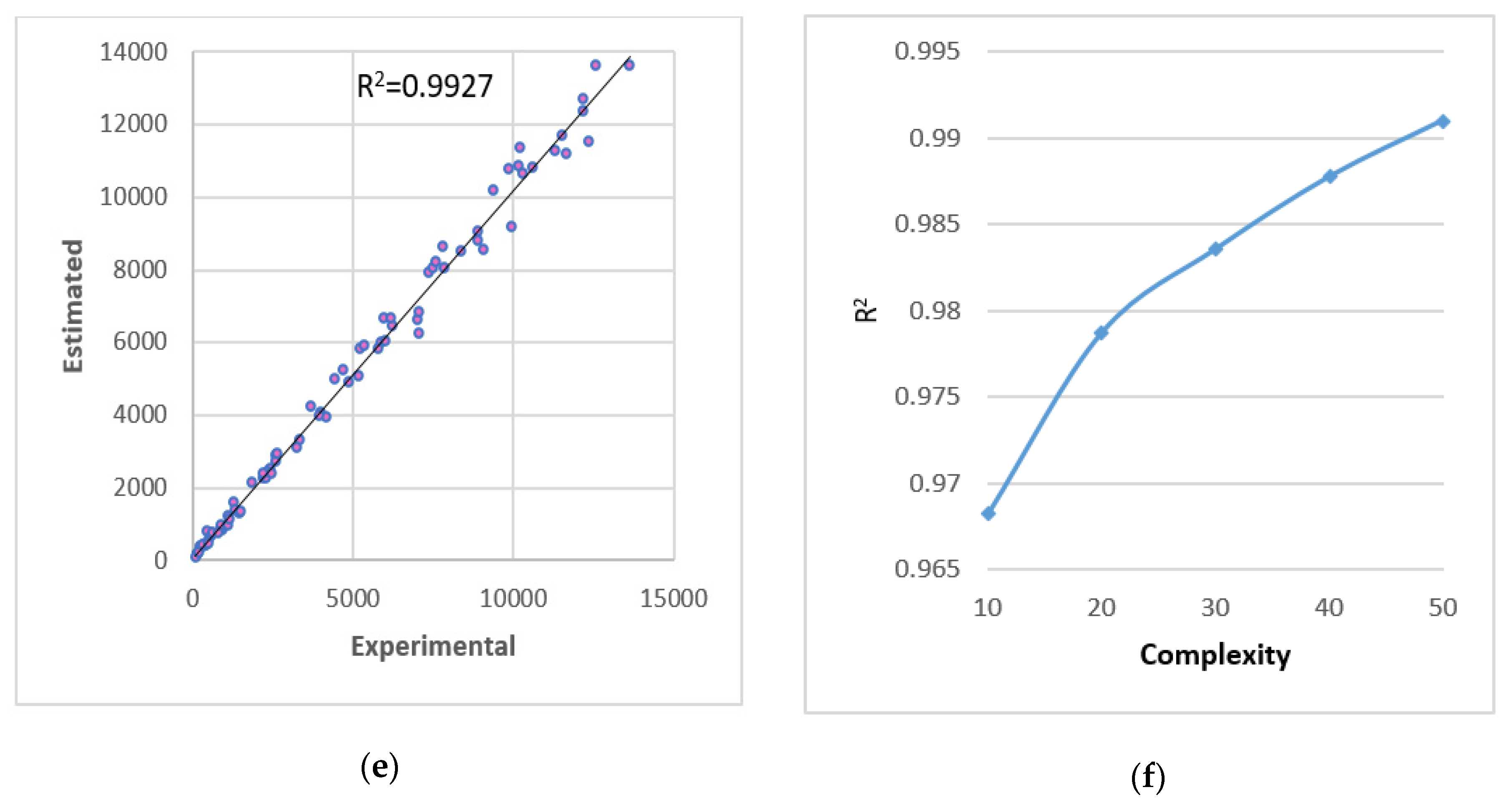
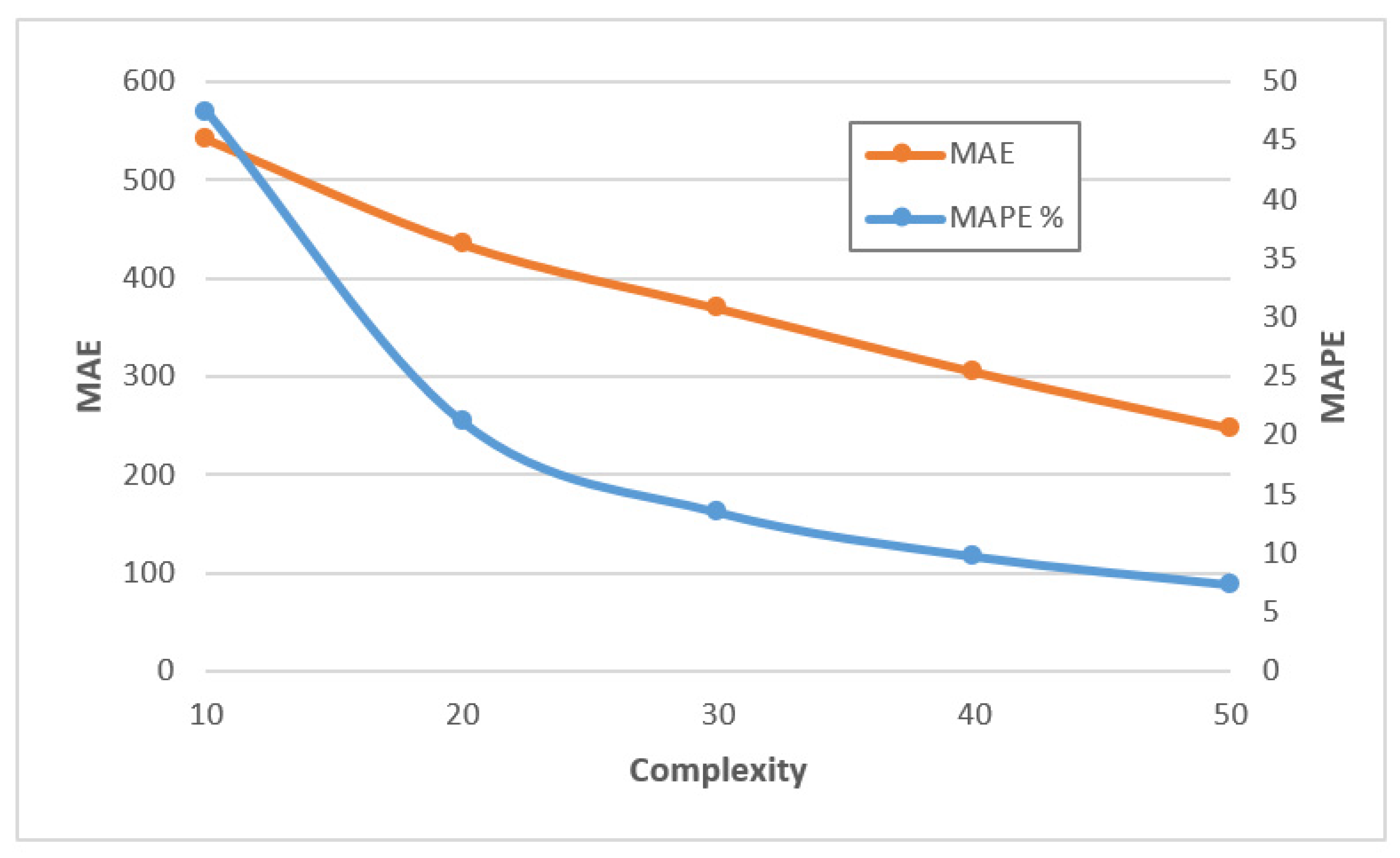
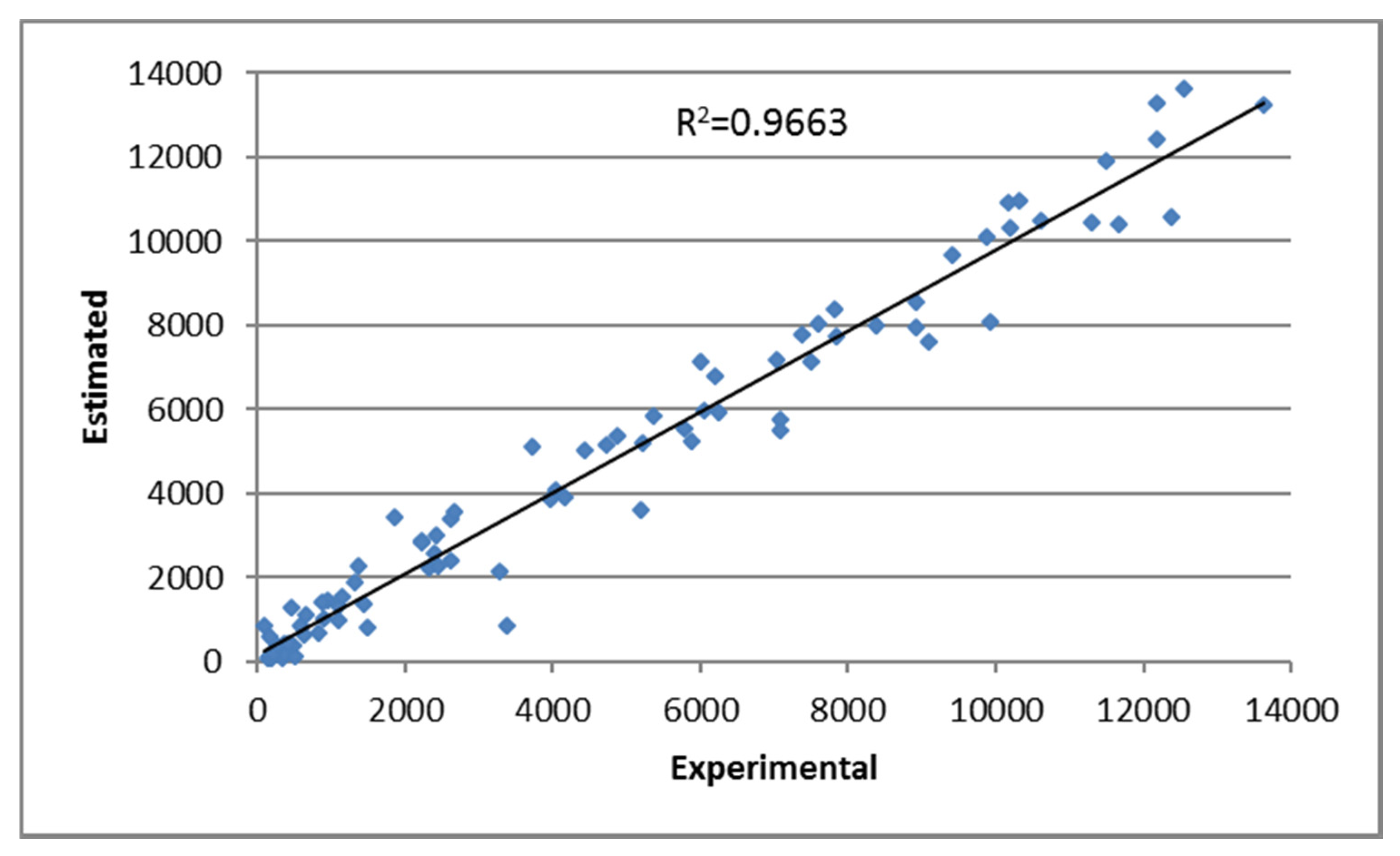
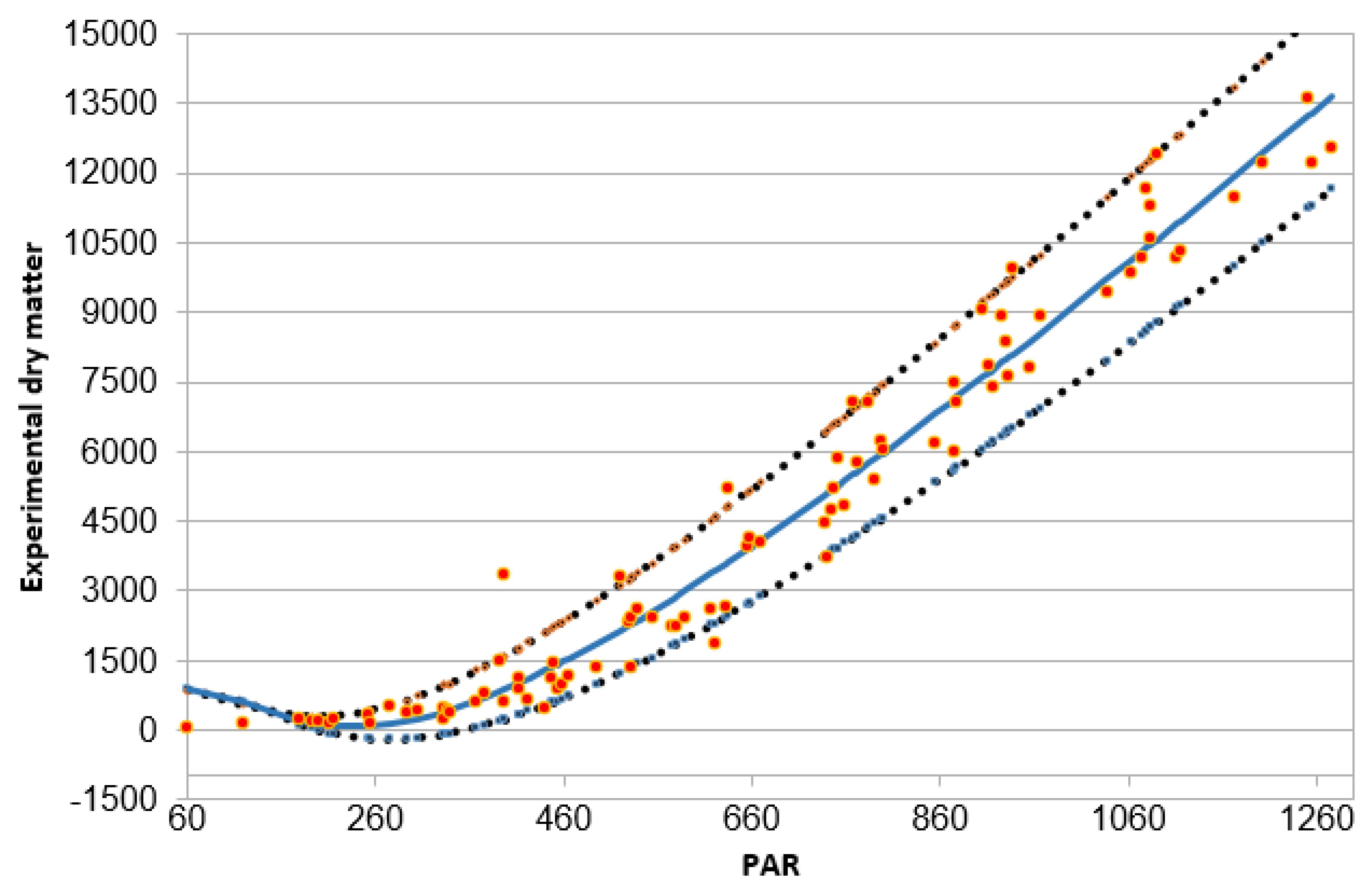
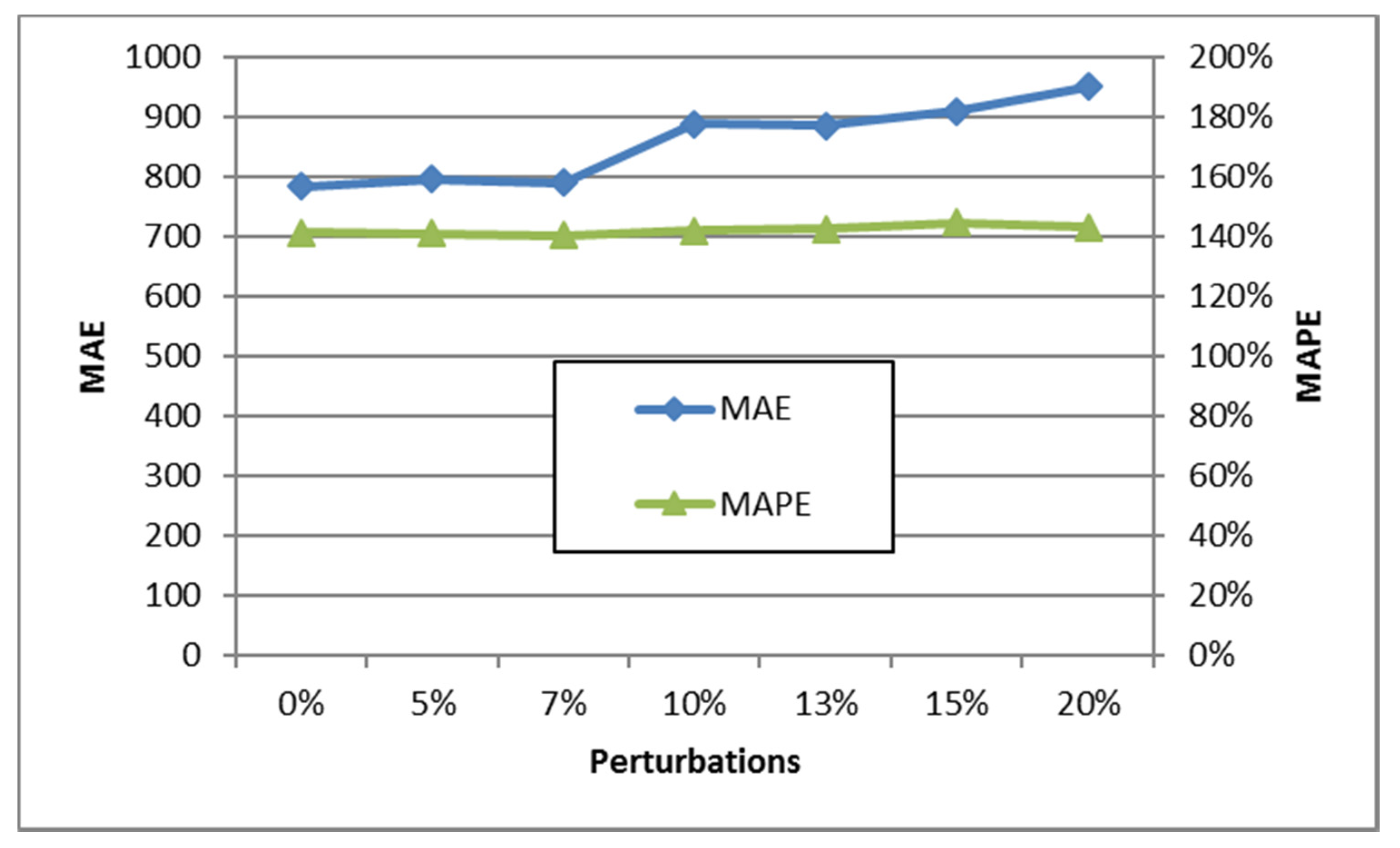




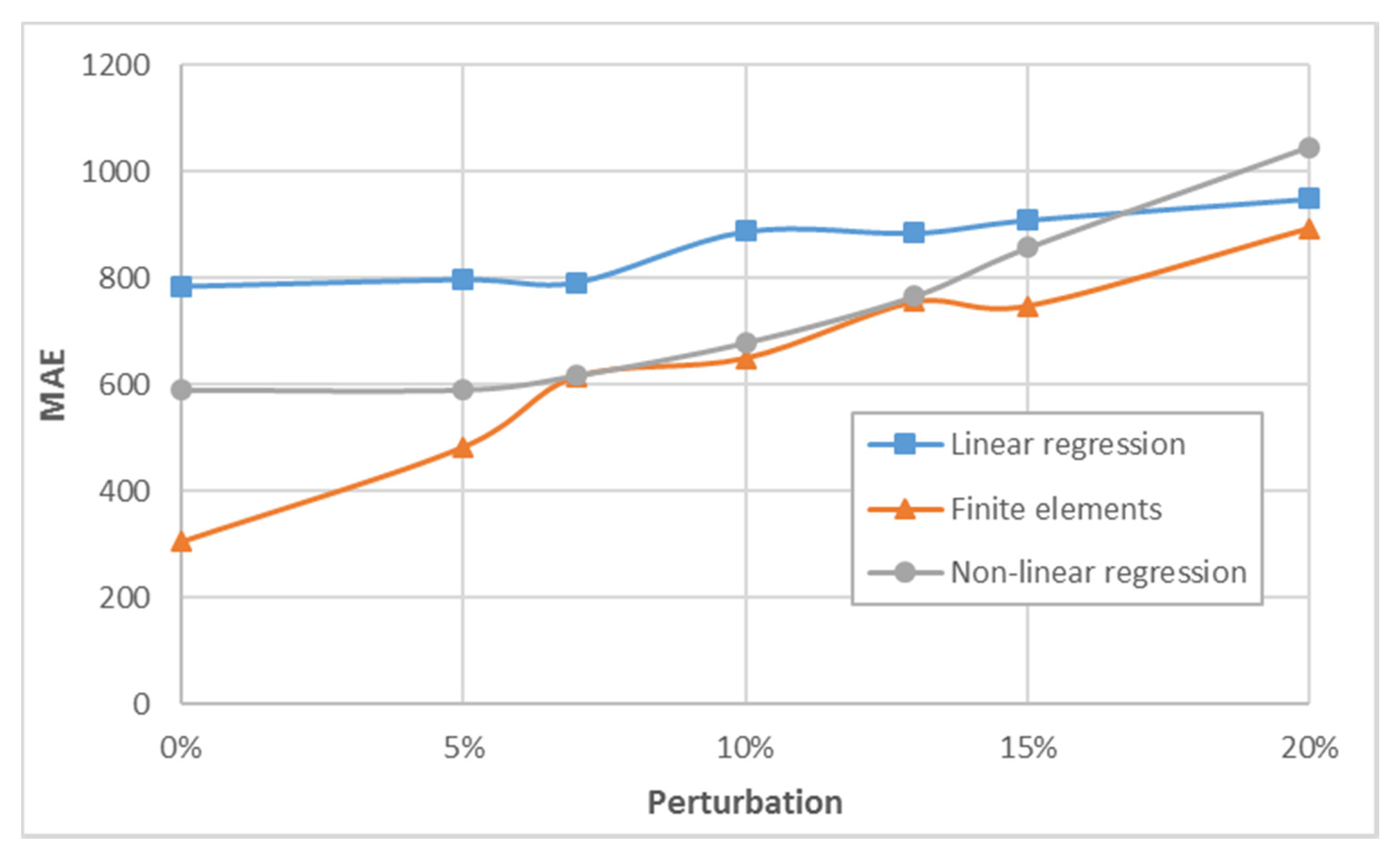
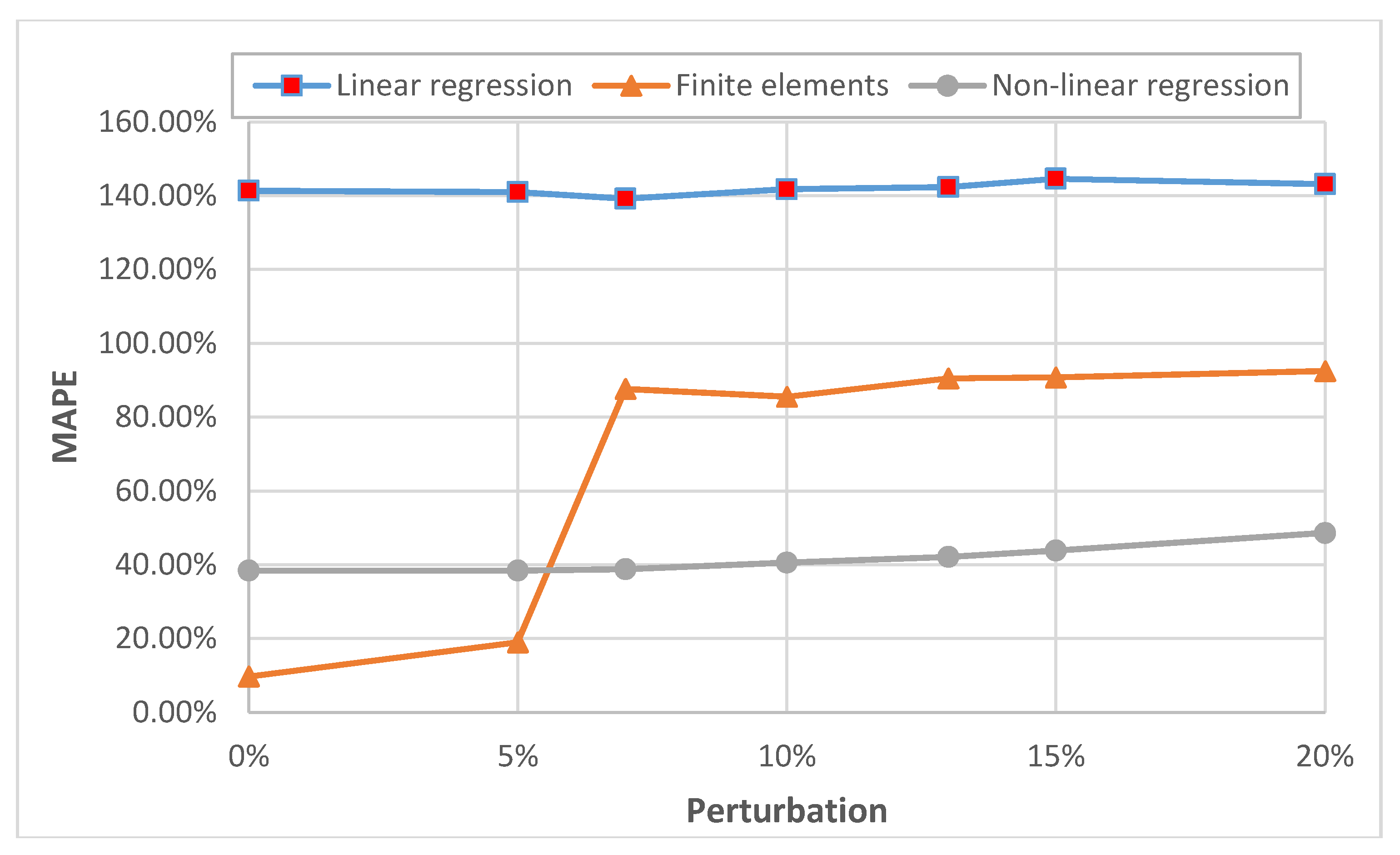
| Variable | Description |
|---|---|
| z | Dry matter |
| x1 | Thermal sum |
| x2 | PAR |
| x3 | Photoperiod |
| Dry Matter | Thermal Sum | PAR | Photoperiod | |
|---|---|---|---|---|
| Minimum | 79.0 | 129.35 | 60.45 | 10.849 |
| Maximum | 13,624.0 | 2049.7 | 1275.3 | 14.498 |
| Average | 4582.1 | 952.22 | 659.28 | 13.511 |
| Median | 3543.0 | 908.20 | 633.92 | 13.796 |
| α | β | γ | |
|---|---|---|---|
| Estimation | −11,600.1 | 18.2509 | 237.465 |
| Std. Deviation | 1330.75 | 0.8808 | 24.7655 |
| T Statistic | −8.717 | 20.72 | 9.589 |
| p-Value | 2.41 × 10−13 (***) | 1.50 × 10−34 (***) | 4.25 × 10−15 (***) |
| Model | R2 | MAE | MAPE (%) |
|---|---|---|---|
| Linear regression | 0.9389 | 782.74 | 141.34 |
| Finite element (complexities 30) | 0.9858 | 369.08 | 13 |
| Finite element (complexities 40) | 0.990 | 304.38 | 9.65 |
| Non-linear regression | 0.9663 | 531.58 | 37.26 |
Publisher’s Note: MDPI stays neutral with regard to jurisdictional claims in published maps and institutional affiliations. |
© 2020 by the authors. Licensee MDPI, Basel, Switzerland. This article is an open access article distributed under the terms and conditions of the Creative Commons Attribution (CC BY) license (http://creativecommons.org/licenses/by/4.0/).
Share and Cite
Villacampa, Y.; Navarro-González, F.J.; Hernández, G.; Laddaga, J.; Confalone, A. Modelling Faba Bean (Vicia faba L.) Biomass Production for Sustainability of Agricultural Systems of Pampas. Sustainability 2020, 12, 9829. https://doi.org/10.3390/su12239829
Villacampa Y, Navarro-González FJ, Hernández G, Laddaga J, Confalone A. Modelling Faba Bean (Vicia faba L.) Biomass Production for Sustainability of Agricultural Systems of Pampas. Sustainability. 2020; 12(23):9829. https://doi.org/10.3390/su12239829
Chicago/Turabian StyleVillacampa, Yolanda, Francisco José Navarro-González, Gabriela Hernández, Juan Laddaga, and Adriana Confalone. 2020. "Modelling Faba Bean (Vicia faba L.) Biomass Production for Sustainability of Agricultural Systems of Pampas" Sustainability 12, no. 23: 9829. https://doi.org/10.3390/su12239829
APA StyleVillacampa, Y., Navarro-González, F. J., Hernández, G., Laddaga, J., & Confalone, A. (2020). Modelling Faba Bean (Vicia faba L.) Biomass Production for Sustainability of Agricultural Systems of Pampas. Sustainability, 12(23), 9829. https://doi.org/10.3390/su12239829







